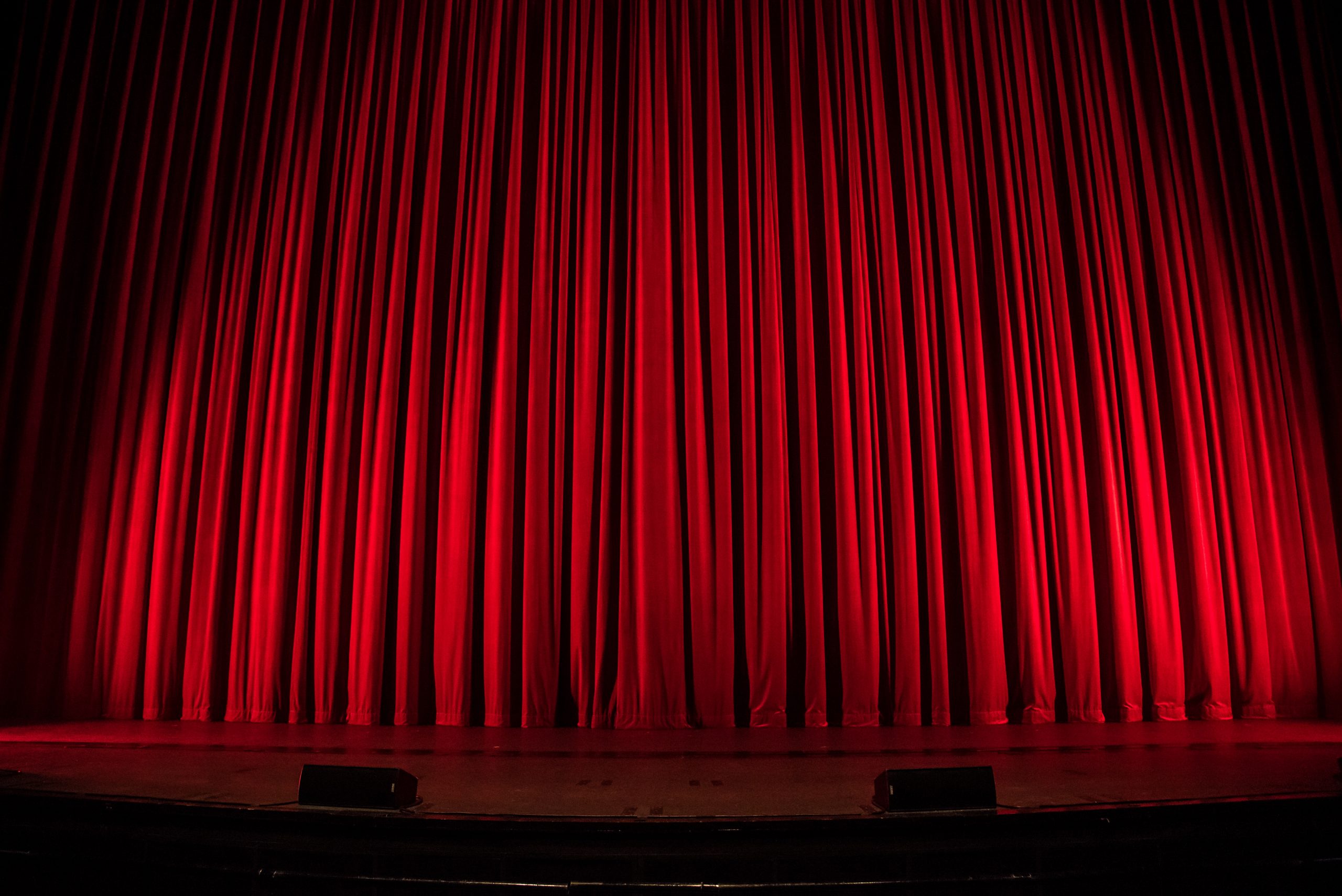The cost of theater and stage curtains ranges from a few thousand to as much as a hundred thousand. It comes down to the fabric you choose, the width and height of the opening you’re adding curtains to, and whether you are installing them or need professional installers.
How to Measure Your Theater Space
Make sure you get an accurate measurement for stage and theater curtains. If you have curtains currently in place, take measurements from the top of the curtain down to the floor. Measure from one end of the stage to the other. If the curtains have been taken down, spread them over the lawn or large area like a gym floor and take measurements that way.
Note those measurements and look into the type of fabric that’s being used. Natural theater fabrics like cotton or muslin will stretch over time. The old curtains may be several inches longer or wider than they were originally. Synthetic fabrics don’t stretch as much with age. You can consider those measurements to be pretty accurate.
If you’ve noticed that the curtains don’t cover as much area on the stage as you’d like, calculate the additional coverage you would like and make sure that’s added to your measurements. If you’ll be changing the ceiling support hardware, consider those changes, too. Chain support hardware may hang lower than a track system. Figure any difference in hardware and factor that into your measurements, too.
What Components Do You Need?
What are you planning when it comes to your theater and stage curtains? Some of the common stage curtain components are:
- Backdrops – Solid curtain at the back of the stage that may be hand-painted with the stage scenery
- Borders and valances – Used to hide lighting and equipment hanging above the stage and to the sides
- Cycloramas – Plain muslin curtain that is lit up from the front for color and lighting effects
- Main curtains – Primary curtains that open and close before and after each act
- Scrims – Becomes transparent when lighting is added behind them
- Travelers – Movable curtains that are placed in different locations as needed
The Best Fabrics for Stage and Theater Curtains
Every stage is different, so you may need a few basics or want other curtain components for complex stage designs. You’ll need to chose theater fabrics and stage curtain fabrics that match their intended use. These are the choices you have when shopping for the best stage and theater curtains.
Burlap: Burlap is cheaper than canvas and just as durable. It is a natural material that can be painted if desired. Natural burlap starts at $3.25 per running yard.
Commando Cloth: This fabric is heavier than Duvetyne but less expensive than velour. It absorbs light and is a good choice for a budget-friendly main curtain. Get Commando Cloth for as little as $8.95 per running yard.
Duvetyne: Has a velvet nap on one side of the twill. The fabric absorbs light and is flame retardant. Used frequently as stage skirting, to block out lighting located behind it, and for black backdrops. Get Duvetyne for under $6 per running yard.
Poly Silk: For fluid, luminescent curtains in the mid-stage area or for backdrops, poly silks are popular. It comes in more than a dozen colors and is flame retardant. You can get poly silk for as little as $9.75 per running yard.
Rip Stop Nylon: The lightweight nature of Rip Stop nylon makes it a popular option for backdrops and screens. It is the material that parachutes are made from, which means it doesn’t rip or tear easily. It’s also fire retardant and starts at $11.85 per running yard.
Scrim: Woven cotton fabric that is lightweight. It’s used to hide actors or props from the audience’s view until it’s time to reveal them. Lighting from behind the scrim can turn it into a see-through material for special effects. Find three kinds of scrim at Chicago Canvas for $7.90 (Theatrical Linen) to $135.50 (Leno Filled) per running yard.
Sound Absorbing Fabric: Block out sounds from behind the scenes using sound absorbing fabric. You can use it to hide the musicians or stagehands. It’s a fire retardant material made from cotton. Sound absorbing fabric starts at $18.80 per running yard.
Untreated Canvas Tarp: If you’re hand-painting a backdrop, untreated canvas tarps are a favorite for large art projects. At approximately, $60 for a 10 by 10′ square, it’s an affordable choice.
Velour: There are velour fabrics that are flame retardant (Marvel Velour) or inherently flame retardant (Encore Velour) that is washable but costs more. Velour is a popular choice for the main curtains as it is wrinkle-resistant and hangs nicely. Velour starts at just under $17 per yard.
Do you need a custom size or still aren’t sure you can meet your theater group’s budget while getting everything you need? Chicago Canvas & Supply has several sizes of theater and stage curtains available, but we also welcome custom orders. We also are happy to share our expertise in choosing budget-friendly theater and stage fabrics. We’ll help you find the right theater fabrics for your production. Complete the online form to get started.





